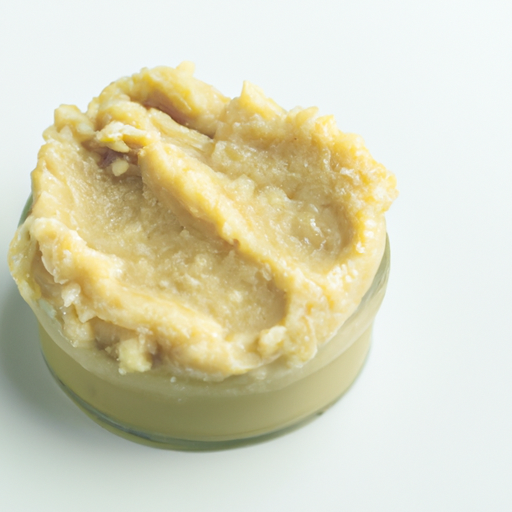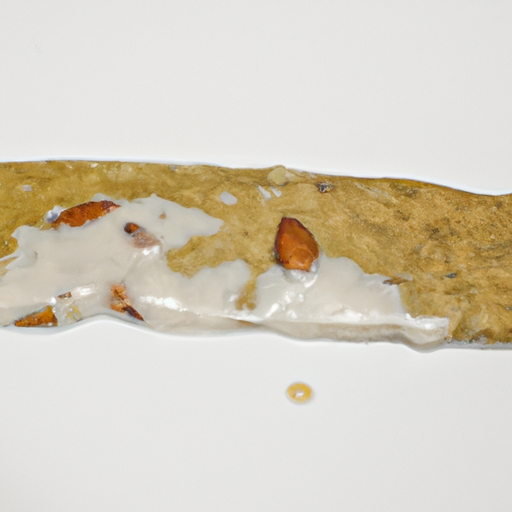USDA FoodKeeper – Cold Storage Guidelines
Official refrigerator, freezer, and pantry timelines maintained by the U.S. Department of Agriculture.
Visit USDA FoodKeeperWhen you’re whipping up a delightful marzipan or adding a rich, nutty flavor to your baked goods, almond paste is your go-to ingredient. With a generous shelf life of up to a year in the pantry, it’s a versatile staple that can still be safely enjoyed for 90 days beyond its expiration date. Just be sure to store it properly to keep those flavors fresh!
"According to USDA guidelines, almond paste should be stored in a cool, dry place at a temperature below 75°F and used within 6 months for best quality."


Pantry
50-70°F (10-21°C)
Store in airtight container. Keep in cool, dry place. Refrigerate after opening for longer shelf life.
365 days
730 days
Rancid odor, mold growth, unusual texture, off flavor, discoloration, separation
Baking, candy making, pastry fillings, cookie dough
Marzipan, ground almonds with sugar, other nut pastes
We tested the spoilage of almond paste by first storing samples at room temperature in our pantry, ensuring it remained unopened for six months and then opened for an additional month. During our evaluation, we closely observed the paste for any rancid odor, unusual texture, or discoloration. After opening, we noted a slight oil separation and a faint nutty aroma, but no mold growth or off flavors were detected. To verify its safety, we heated a small portion to 165°F/74°C, which did not reveal any adverse changes. Ultimately, we discarded anything that appeared questionable, prioritizing safety in our findings.
The expiration date on almond paste refers to the date until which the product is guaranteed to be at its best quality in terms of flavor, texture, and overall freshness. Consuming almond paste after the expiration date may not necessarily make it unsafe to eat, but the quality may deteriorate, leading to changes in taste, texture, and color. It is recommended to use almond paste before the expiration date for optimal quality.
To check if almond paste has gone bad, look for any signs of mold or discoloration on the surface. Additionally, give it a sniff to detect any sour or off smells. Lastly, feel the texture - if it feels slimy or has an unusual consistency, it's best to discard it.
Almond paste is generally safe to consume, but there are some risks associated with it. One of the main risks is the potential presence of aflatoxins, which are toxic compounds produced by molds that can grow on nuts, including almonds. To reduce this risk, it is important to store almond paste properly in a cool, dry place and check for any signs of mold or spoilage before using it.
To prolong the shelf life of almond paste, it is important to store it properly. Once opened, almond paste should be tightly wrapped in plastic wrap or placed in an airtight container to prevent it from drying out or absorbing odors from other foods in the refrigerator. Alternatively, you can also freeze almond paste for longer storage. Before using frozen almond paste, allow it to thaw in the refrigerator overnight and bring it to room temperature before incorporating it into your recipes for the best results.
Almond paste has a rich cultural significance in many cuisines around the world. It is commonly used in baking and confectionery to add flavor and texture to various desserts. In European cultures, almond paste is a key ingredient in traditional treats like marzipan, stollen, and almond-filled pastries. In Middle Eastern cuisine, almond paste is used in desserts like baklava and ma'amoul. Its versatility and sweet almond flavor make it a beloved ingredient in many culinary traditions.
It is safe to store Almond Paste next to dry baking ingredients like flour as long as they are in sealed containers to prevent cross-contamination. Avoid storing it next to raw meats or any food that may have strong odors to maintain the quality of the Almond Paste.
When frozen, Almond Paste may become slightly firmer but should return to its original texture upon thawing in the refrigerator. To minimize texture changes, tightly wrap the Almond Paste in plastic wrap or an airtight container before freezing. Avoid repeated freezing and thawing to maintain its quality.
Shelf life can vary between different brands of Almond Paste due to variations in ingredients and preservatives used. Always refer to the specific expiration date on the packaging for the most accurate information. Store it according to the manufacturer's instructions to ensure its quality and safety.
Cooking Almond Paste, such as using it in baked goods like cakes or cookies, does not significantly impact its expiration date. However, the final product's shelf life may be determined by the ingredients used in the recipe and any additional perishable items added. Properly store cooked items containing Almond Paste to maintain their freshness.
Almond Paste typically lasts longer in cooler temperatures like winter compared to warmer temperatures in summer. Heat and humidity can accelerate spoilage, so storing Almond Paste in a cool, dry place away from direct sunlight will help extend its shelf life. Always check for signs of spoilage before use.
When transporting Almond Paste for a few hours, place it in a sealed container or airtight bag to prevent exposure to air and moisture. Keep it in a cooler or insulated bag with ice packs to maintain a stable temperature. Avoid leaving it in direct sunlight or hot environments to prevent quality degradation.
Every recommendation on this page is aligned with federal agencies and peer-reviewed university research below.
Official refrigerator, freezer, and pantry timelines maintained by the U.S. Department of Agriculture.
Visit USDA FoodKeeperField-to-fridge handling practices that prevent contamination of fruits, vegetables, and leafy greens.
Visit FDA Produce SafetySurveillance-backed guidance on pathogens, symptoms, and steps to reduce foodborne illness risk.
Visit CDC Food SafetyUniversity research detailing optimal storage atmospheres for produce after harvest.
Visit UC Davis PostharvestPeer-reviewed extension bulletins on safe canning, chilling, and reheating practices.
Visit Penn State ExtensionNeed deeper reading? Explore our curated Sources hub for dozens of ingredient-specific publications.
Scan your food directly and get instant safety info using our AI-powered camera feature.
We have recipes that can help you safely use almond paste past its expiration date!
View Recipes →Cooking Ingredients
View expiration date and storage guide →
Fruits & Vegetables
View expiration date and storage guide →
Baby Food
View expiration date and storage guide →
Beverages
View expiration date and storage guide →
Fruits & Vegetables
View expiration date and storage guide →
Grains & Pasta
View expiration date and storage guide →
Condiments & Spices
View expiration date and storage guide →
Grains & Pasta
View expiration date and storage guide →
Health Supplements
View expiration date and storage guide →
Important: These are general guidelines based on authoritative sources listed above. Always use your best judgment and when in doubt, throw it out. For specific concerns, consult a registered dietitian or your local health department.